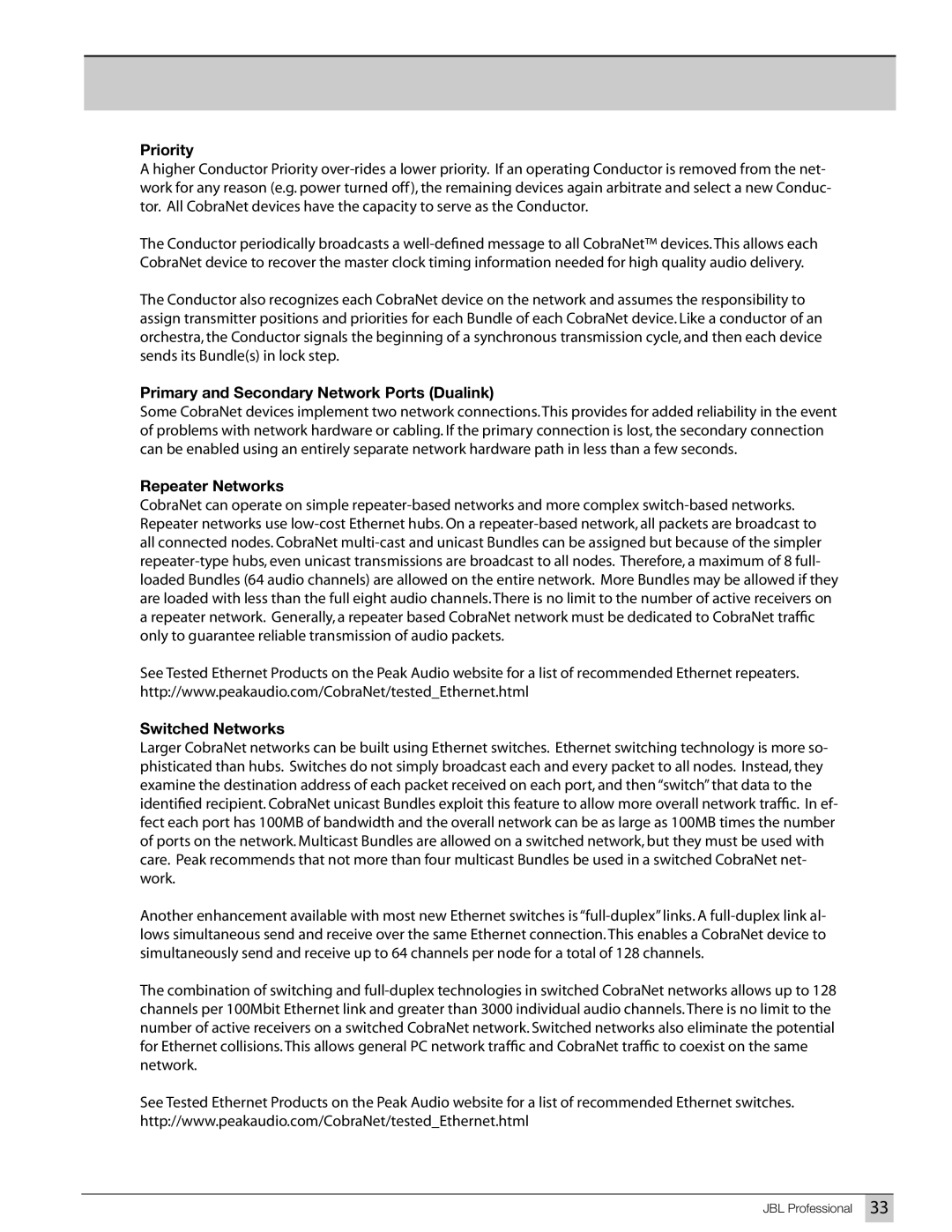
Priority
A higher Conductor Priority
The Conductor periodically broadcasts a
The Conductor also recognizes each CobraNet device on the network and assumes the responsibility to assign transmitter positions and priorities for each Bundle of each CobraNet device. Like a conductor of an orchestra, the Conductor signals the beginning of a synchronous transmission cycle, and then each device sends its Bundle(s) in lock step.
Primary and Secondary Network Ports (Dualink)
Some CobraNet devices implement two network connections.This provides for added reliability in the event of problems with network hardware or cabling. If the primary connection is lost, the secondary connection can be enabled using an entirely separate network hardware path in less than a few seconds.
Repeater Networks
CobraNet can operate on simple
See Tested Ethernet Products on the Peak Audio website for a list of recommended Ethernet repeaters. http://www.peakaudio.com/CobraNet/tested_Ethernet.html
Switched Networks
Larger CobraNet networks can be built using Ethernet switches. Ethernet switching technology is more so- phisticated than hubs. Switches do not simply broadcast each and every packet to all nodes. Instead, they examine the destination address of each packet received on each port, and then “switch” that data to the identified recipient. CobraNet unicast Bundles exploit this feature to allow more overall network traffic. In ef- fect each port has 100MB of bandwidth and the overall network can be as large as 100MB times the number of ports on the network. Multicast Bundles are allowed on a switched network, but they must be used with care. Peak recommends that not more than four multicast Bundles be used in a switched CobraNet net- work.
Another enhancement available with most new Ethernet switches is
The combination of switching and
See Tested Ethernet Products on the Peak Audio website for a list of recommended Ethernet switches. http://www.peakaudio.com/CobraNet/tested_Ethernet.html
